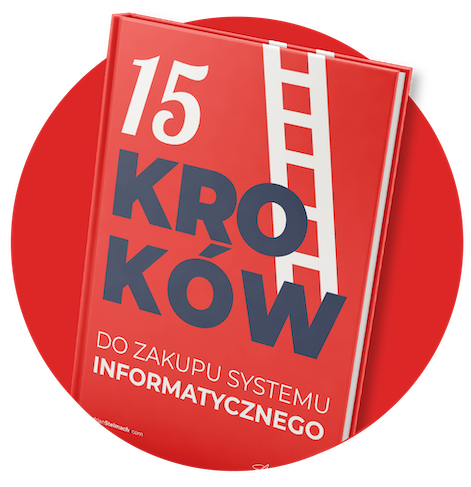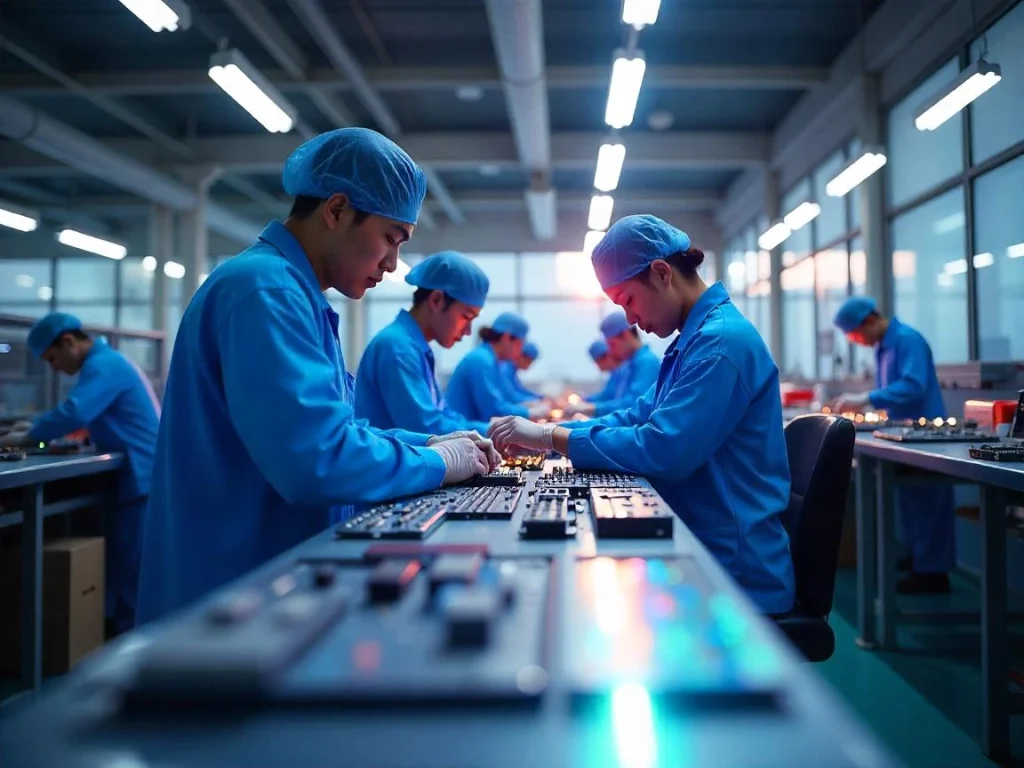
NEWSLETTER
Wpisz swój adres e-mail i zyskaj e-booka
Bez niechcianej poczty ani reklam
Tylko merytoryczne treści z obszaru digitalizacji produkcji

Lean Manufacturing, lean production, elimination of waste. These are buzzwords that every production manager knows.
But is Lean actually still the same thing now and 30 years ago?
Over the past three decades, attitudes have changed fundamentally.
While previously it relied mainly on reducing inefficiencies through simple observations and actions, today it is based on advanced data analysis, digitization and full process integration.
It’s not just about physical losses anymore. Information waste, lack of data flow or misreporting are equally important problems today.
In today’s article, I’ll talk about how to use new technologies after the plant operates according to the Lean philosophy.

Nowadays, the implementation of Lean Manufacturing cannot exist without technology.
Data that used to be collected manually – today goes automatically into MES, ERP or BI systems.
However, it is important that data from one system is also available in others. Lack of integration turns modern tools into modernized versions of notebooks.
Implementations should start with a diagnostic workshop. It is important to assess the digital maturity of the company:
Transformation should match the pace of the organization. Automating chaos is a recipe for failure.
Instead, it’s better to build a process map, identify bottlenecks and start by piloting one area so as not to overload the team.

The technologies and basic tools of Lean Manufacturing are primarily:
We should also mention Excel – still a popular tool in many companies. While useful, it should not be a source of data.
It can be used to perform analysis, but information should go to it automatically.

Get 5 chapters of the book for free!
Join the newsletter and gain access to 40% of the book
“15 Steps to Buying an Information System“.
Plants that combine Lean with technology are gaining concrete results. At one factory, an MES system helped significantly reduce downtime in just three months. At another, IoT sensors used to monitor temperature in a cold storage room significantly reduced raw material losses.
In both cases, automation of data collection and immediate analysis was important.
Lean Manufacturing in the digital version is also a visible improvement in ergonomics.
Virtual models of workstations, analysis of operator workloads, visualization of workflows – all of these enable the environment to better match people, not the other way around.
This approach improves efficiency, but also reduces errors and accidents. What’s more, it enables more effective analysis and translation into concrete improvement actions.

Technology is just a tool. Even the best system won’t work if employees don’t know how to use it or don’t see the value in it. Therefore, the culture and concept of Lean must be based on education and continuous improvement.
Training in interpreting data, responding to problems, working with new systems – this is a daily occurrence in modern production.
Finally – an example from a small food company. The implementation of a simple digital temperature reporting and monitoring system has saved material and improved quality control.
You don’t need huge budgets or entire IT departments. All you need is a willingness to change, good advice and an openness to a new approach.
Implementing Lean Manufacturing today is more than a process – it is a way of thinking about the company’s future.

1. do a diagnosis – identify which areas of production generate the greatest losses (time, quality, information).
2. Conduct a workshop with the team – ask operators what is not working and what ideas they have.
3. Choose one process to pilot – preferably one that is frequently repeated and easy to measure.
4. introduce simple tools – perhaps a tablet with a form, a temperature sensor or an alert system.
5. analyze the data and react – set up alerts to inform you of deviations and discuss the results with your team.
Most important – start with small steps and build on real results.
Digital Lean Manufacturing does not require a revolution – just consistency and a growth mindset.
You don’t have to start with a large investment. The best Lean implementations using technology are those that grow step by step.
What matters is consistency, team commitment and readiness to change. Automation without analysis makes no sense.
Technology without context is just a gadget. But Lean that supports people and is based on data – it’s a tool that supports gaining a competitive advantage.
It’s an approach worth developing – regardless of company size or industry.

In classic Lean Manufactuirng we focused mainly on the physical flow of materials. Today, the flow of information is just as important – or perhaps more important. In many plants, we still copy the same data from a piece of paper to Excel, from Excel to e-mail, and from e-mail to an ERP system.
It’s a waste of time, energy and a source of error. The modern approach to Lean is that you enter data once – and then it goes automatically to where it is needed.
It’s a bit like energy management – it’s not enough to have electricity, you still have to distribute it well.
This is why system integration is so important: MES, ERP, BI, IoT. They all have to talk to each other, because only then can we talk about eliminating information waste.
And it is often responsible for the greatest delays and costs – not lack of material, but lack of decisions, lack of data, lack of knowledge flow.
If you found this article interesting, be sure to check out the latest episode of the Digitalizuj.pl videopodcast!
In it, you’ll find more answers to questions about how to combine Lean with technology, how to improve reporting, and how MES, IoT and BI systems can help you monitor efficiency and eliminate waste on a daily basis.